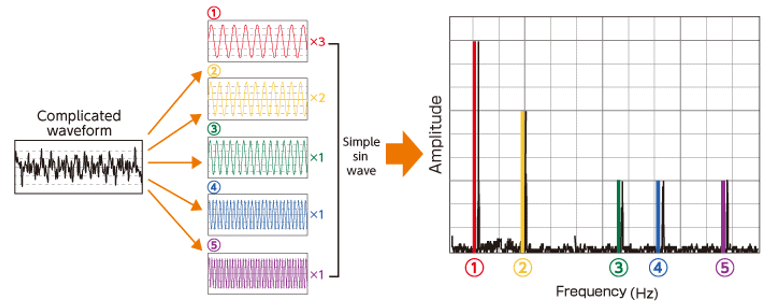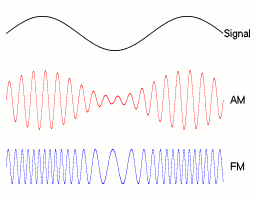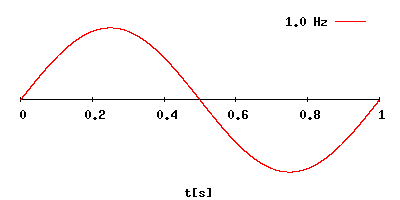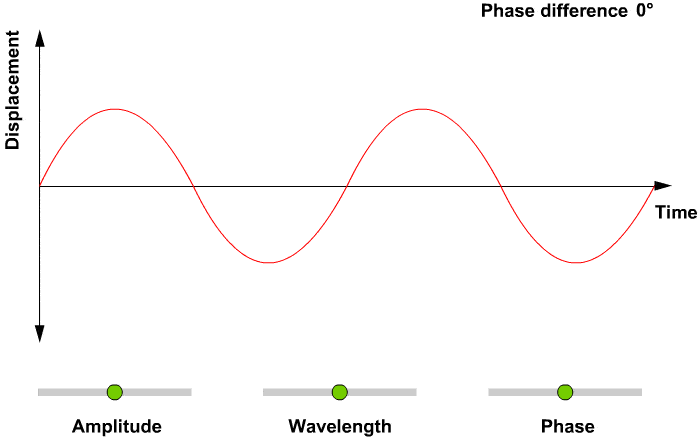Measurements of Vibrations: Detailed Notes | Sensor & Industrial Instrumentation - Electronics and Communication Engineering (ECE) PDF Download
Vibration
Vibration is an oscillating motion relative to a reference plane of measurement and most importantly it is a result of force.
Measurements of Vibrations
Machine vibration is typically measured and reported in terms of Displacement, Velocity, and Acceleration.
- Displacement is the distance traveled. For cars, we use large units such as km or miles. For vibration, the distances are very small, so we typically use microns (1/1000 mm) or mils (1/1000 inch).
- Velocity is the Time rate of change of displacement. For transportation, we use large units such as km/hr or miles/hr. For vibration, It is measured in mm/s or IPS.
- Acceleration is the Time rate of change of velocity. For transportation, we use large units such as m/s2, ft/s2, or “G” which is the acceleration of gravity . For vibration, we use m/sec2, in/sec2, or most commonly acceleration of gravity “G”.
Vibration is not just magnitude, it also includes a direction – similar to east or west directions traveled by automobile, or the vertical axis measured by the machinery vibration sensor shown below. A quantity that has both a magnitude and a direction is called a “vector” and Displacement, Velocity and Acceleration are all vectors.In the car example; after you start your car, you first accelerate using the acceleration pedestal, then you gain velocity to reach the distance you want. So, acceleration leads velocity and velocity leads displacement.
A quantity that has both a magnitude and a direction is called a “vector” and Displacement, Velocity and Acceleration are all vectors.In the car example; after you start your car, you first accelerate using the acceleration pedestal, then you gain velocity to reach the distance you want. So, acceleration leads velocity and velocity leads displacement.
➢ The same is true in machine vibration
The plot below is called a timebase plot, which has the amplitude on Y-axis and time on X-axis. The time is increasing from left to right and we can see the positive peak of acceleration happening before the velocity, and the velocity positive peak happens before the displacement.
When we measure the movement of the machine housing, we are measuring movement caused by forces. These forces are transmitted through the bearing to the machine casing, causing it to accelerate according to the magnitude of the forces and the mass of the casing.
The acceleration (which is a function of force) results in the velocity of the case movement (which proportional to fatigue) and displacement of the case (which is proportional to stress).
Vibration Signal
- Direct amplitude: The measure of the total amplitude of the original signal. For example, the waveform in the figure below is a direct, or unfiltered, waveform and we can measure the amplitude from the pk-to-pk as 2.9 mils Pk-Pk.

- Frequency: The content of the signal may give us clues as to what category of possible malfunctions the machine is experiencing. The waveform is a complex waveform consisting of multiple frequencies, some experienced technicians can tell that it is a 1X and 5X, however, it is easier - and more reliable - to get this information from another plot called a spectrum plot.

- nX amplitude and phase: When we break the vibration signal into discrete frequency components, we can measure both their amplitude and phase. The waveform in the image below represents the filtered 1X WF of the previously mentioned waveform (above), and we can tell the amplitude is 2.0 mils pk-pk. Also, the keyphasor® signal which is represented by small dots on the waveform is considered a timing reference. Knowing that the complete vibration cycle is 360 degrees, and that phase is measured from the key phasor event to the next positive peak, we can tell that phase is ~10 degrees.

- Position is the dc component of the displacement transducer, which will be discussed in the proximity transducer section of this article. Position information can be very important in analyzing certain machine malfunctions (e.g., misalignment and instability).
- Shape or form: Shape of a vibration leads to a greater degree of accuracy in diagnosing the source, the underlying cause, and then the appropriate action to take. Similarly, amplitude, frequency, and phase information combine to give us a characteristic shape or form of the vibration. The form of the vibration signal can sometimes highlight significant changes that individual signal measurements might not be able to do it alone.
|
22 videos|28 docs|29 tests
|
















